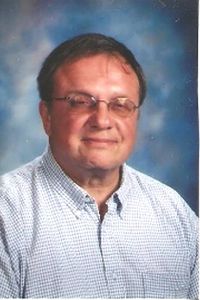
Dr. Steve Highlander

Irene Lindsey

Harrison Elementary School

Harrison Elementary School
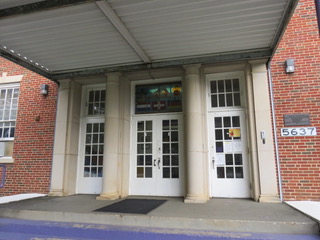
Harrison Elementary School
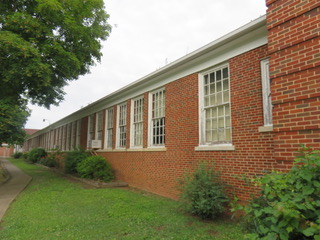
Harrison Elementary School

Harrison Elementary School

Harrison Elementary School

Harrison Elementary School

Harrison Elementary School

Harrison Elementary School

Harrison Elementary School
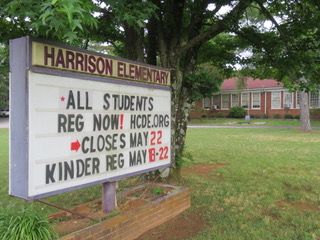
Harrison Elementary School
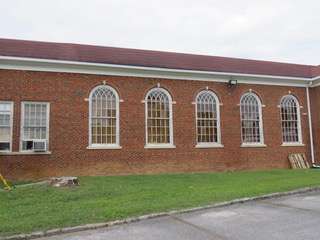
Harrison Elementary School

Harrison Elementary School
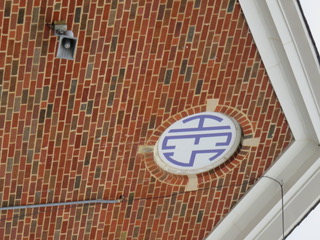
Harrison Elementary School
To use school vernacular, the last period has finally come for Harrison Elementary School off Highway 58.
After 81 years of service, the old school building is being shuttered later this year to make way for the new Harrison Elementary across Highway 58.
The new school sits behind Brown Middle School, but it will be accessed via the new Ferdinand Piech Way named for the late worldwide Volkswagen executive.
Its principal will be Wendy Jung, who is also the principal of the current Harrison Elementary.
The new educational complex is actually not supposed to be completed until close to Christmas time due to construction delays, so the old Harrison school is being called on for “extra help,” to use another school term.
It is temporarily scheduled to house grades 3 through 5 as part of the Harrison STEAM program this fall, while the old Hillcrest Elementary by Highway 153, which is also closing, will house students in K-2
nd grade until the new school opens.
For decades as that area grew and developed south and north of it, the old Harrison school at 5637 Highway 58 was as constant and unchanging as the basic rules of grammar and arithmetic that generations of students have learned.
Its classic look has continued to stand the test of time, too, even as such also-interesting round schools like Central High and Brown Middle School from the mid-20th century have seen their architectural styles come and quickly go.
But the old building has finally become worn out physically, if not as much visually, and a decision was made to build a new school.
According to Hamilton County District 9 school board member and Harrison Elementary alumnus Steve Highlander, the building has such problems as plumbing issues and sewer gas leaks, as well as windows in the auditorium that cannot be shut without damaging the mortar.
After eight decades and a limited facilities budget over the years that was likely not able to keep up the school as well as desired, it is not in good shape.
“It’s in rough shape,” said Dr. Highlander. “As much as I love the old building, it’s not good for kids.”
Regarding whether the building will be preserved and fixed up in some way down the road and become another use, or whether it is torn down, Dr. Highlander said that is to be determined, adding that no decision has been made at present.
He said both the nearby Harrison Ruritan Club and the Harrison Recreation complex have expressed an interest in the property, but more for the land.
Efforts to find the original architect were unsuccessful, but it is known the building opened in 1939 and was built with the help of Franklin Roosevelt’s New Deal jobs relief programs during the Great Depression.
A plaque by the entrance of the school apparently put up in 1939 calls it the Harrison Consolidated School and says it was built under the Federal Emergency Administration of Public Works. President Roosevelt’s name is on the plaque, as is that of Harold Ickes, the federal administrator of public works.
Dr. Highlander said the school was built in the style of and about the time as such other schools as the former Ganns Middle Valley Elementary, the old Bess T. Shepherd Elementary and Falling Water Elementary.
A long, one-story school more typical of those built in more rural areas at that time period, it features an auditorium on the right, a well-ornamented main entrance area (although the decorative look is obstructed by a covered area added later), and plenty of windows. It also has an interesting stained-glass window in the transom above the entrance.
The classic look of the building contrasts sharply with some temporary classrooms placed behind it.
The building is even fuller of historical detail than architectural, based on the memories of Dr. Highlander and 89-year-old Irene Lynn Lindsey, who began attending there when it opened.
Dr. Highlander, whose father was pastor of Crossroads Baptist Church in Ooltewah, said he started at the school in 1957 as a first-grader and jokingly recalls being intimidated seeing the school and wanting to head back home his first day.
Once he settled in, he recalls a series of dry wells around the school the students were not supposed to climb in. “But every chance we had, we climbed in them,” he recalled with a laugh.
Among his teachers, he said that his third-grade teacher, a Ms. Fitzgerald, was strict and demanding, while first-grade teacher Ms. Hawk encouraged an interest in reading.
“I loved to read, and Harrison Elementary fostered a love of reading in me,” he said. “I’m 68 and I still love to read.”
He also soaked up the food, remembering how good the cafeteria lunches were when he was in school. When he was in his 20s and teaching at Central High across the street, he recalled that a student named Jimmy Webb was seen leaving the school during lunchtime, so he got called into assistant principal Stan Farmer’s office and had to confess where he had been going.
“He said, ‘My granny is the best cook in the world,’ and he had been going over there to get something to eat,” Dr. Highlander recalled.
To solve the situation, the popular coach Farmer told him if he would bring him some food, too, he could keep going over there.
Among Dr. Highlander’s other memories of being a student there, he remembered sitting in the auditorium before class and saying the Pledge of Allegiance.
“I never heard of a single alumnus of Harrison Elementary who did not love the school,” he said.
He even knows of one person who did not attend the school who had memories, saying the late County Mayor Claude Ramsey used to have to catch the bus to Tyner High from in front of Harrison.
Irene Lindsey recalled that she began attending the school as a second-grader in 1939, the year it opened, following a year at Oak Hill Elementary on Hickory Valley Road.
“I went through the sixth grade,” she said. “I thought it was nice.”
She recalled with a laugh, though, that it initially did not have one amenity – indoor bathrooms. As a result, they had to use facilities outside.
Among the teachers, she said her second-grade teacher, a Ms. Foster, was really nice and sweet. Ms. Lindsey said she was a smaller student than most and accidentally got knocked down and injured when the students were walking out a door.
“She put me on her lap until I quit crying,” she said.
Her third- and fourth-grade teachers were Ms. Longley and Ms. Watkins, respectively, she said, while for fifth grade she had the school’s only male teacher, a Mr. Orr.
“He was really nice. We had devotions and a salute to the flag and the Lord’s prayer, and we sang out of the Baptist hymnal,” she said of those days before the 1962 Supreme Court ruling against prayers in public schools.
Her sixth-grade teacher, a Ms. Fleman, was also the principal and was an older woman, Ms. Lindsey recalled.
“I didn’t have any bad teachers,” she said.
Among her other memories are of the playground in the back and of the auditorium, although the school did not have a gym.
She came from a big family, and the students had the choice of bringing their lunches or buying them for 10 cents apiece. Sometimes her mother, who did a lot of canning, would send them with a jar of green beans, which allowed the youngsters to eat for free. The beans would be mixed into the other food by the cafeteria manager, a Ms. Champion.
Her later grades at Harrison were during World War II, and she said they would occasionally do air raid drills to know how to react during a potential attack on Chattanooga. She also passed the old TNT/Volunteer Army Ammunition Plant regularly when it was beginning operation, and she remembered seeing guards on towers looking for suspicious activity or possible air attacks as well.
But most of the time at Harrison was fun, not fear, for her.
She went on to Tyner High, the school where Harrison students were zoned during the early decades, but she dropped out. She eventually held such jobs as working in a saddle shop and working in the school cafeteria at the old Northside Junior High (now part of Normal Park).
In hindsight, she encourages students to get a good education, she said.
Ms. Lindsey said she did get an opportunity to go back to Harrison Elementary one time when it celebrated its 50th anniversary, apparently in 1989. She attended with her now-deceased older sister, Dorothy “Dot” Lynn, and then-County Executive Dalton Roberts spoke, she said.
Regarding the news that this once-new school is soon to close due to its aging condition and inadequate physical layout, she is trying to be understanding.
“I guess it is progress,” she said. “But it was a nice school when I went, and it was still nice when I went back for the 50th anniversary.”
Jcshearer2@comcast.net